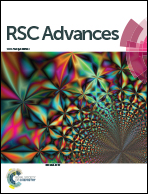Block-shaped pure and doped Li4Ti5O12 containing a high content of a Li2TiO3 dual phase: an anode with excellent cycle life for high rate performance lithium-ion batteries
Abstract
Pure and doped lithium titanate samples (Li4Ti5O12, Li4Ti4.9x0.1O12, x = Ni2+, Cu2+ and Zn2+) are prepared using a simple solid state reaction. All lithium titanate samples are characterized using X-ray diffraction, Fourier transform infrared spectroscopy and scanning electron microscopy. X-ray diffraction patterns show a cubic spinel structure of Li4Ti5O12 with different contents of a Li2TiO3 crystalline second phase, high for the doped samples and low for the pure one. Fourier transform infrared spectra also confirm the spinel structure. Scanning electron microscopy shows block-shaped particles with different particle size distributions. The pure lithium titanate composite sample shows more efficient electrochemical performance than the doped ones at high discharge rates (2–30C) and the opposite is observed at low ones (0.1, 0.5C). The efficiency and cycle life of the pure lithium titanate composite at a high rate (30C) are higher and better than that at a low one (0.1C), making the pure composite a promising anode material for high rate lithium-ion batteries. All results are collected and discussed.


 Please wait while we load your content...
Please wait while we load your content...